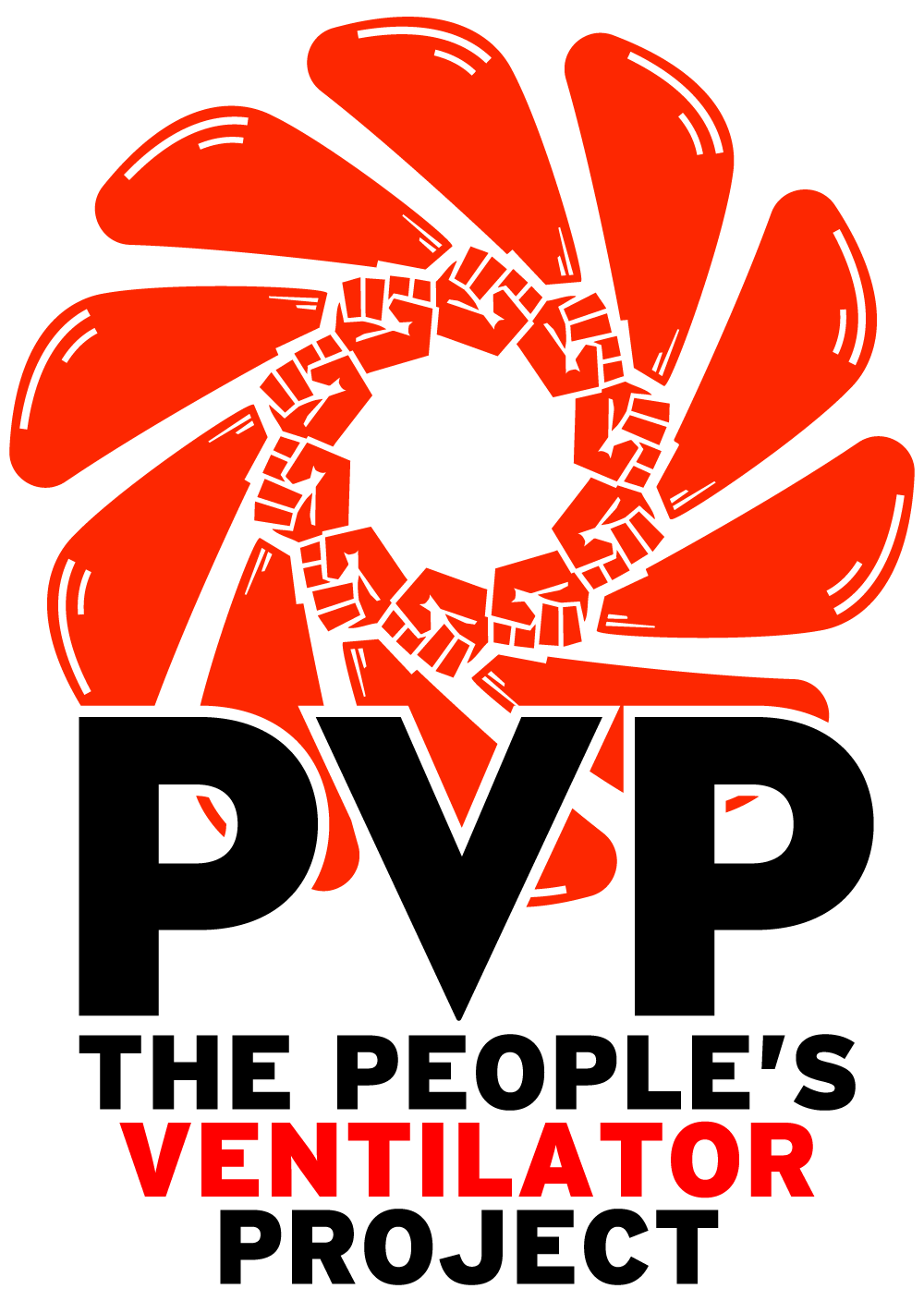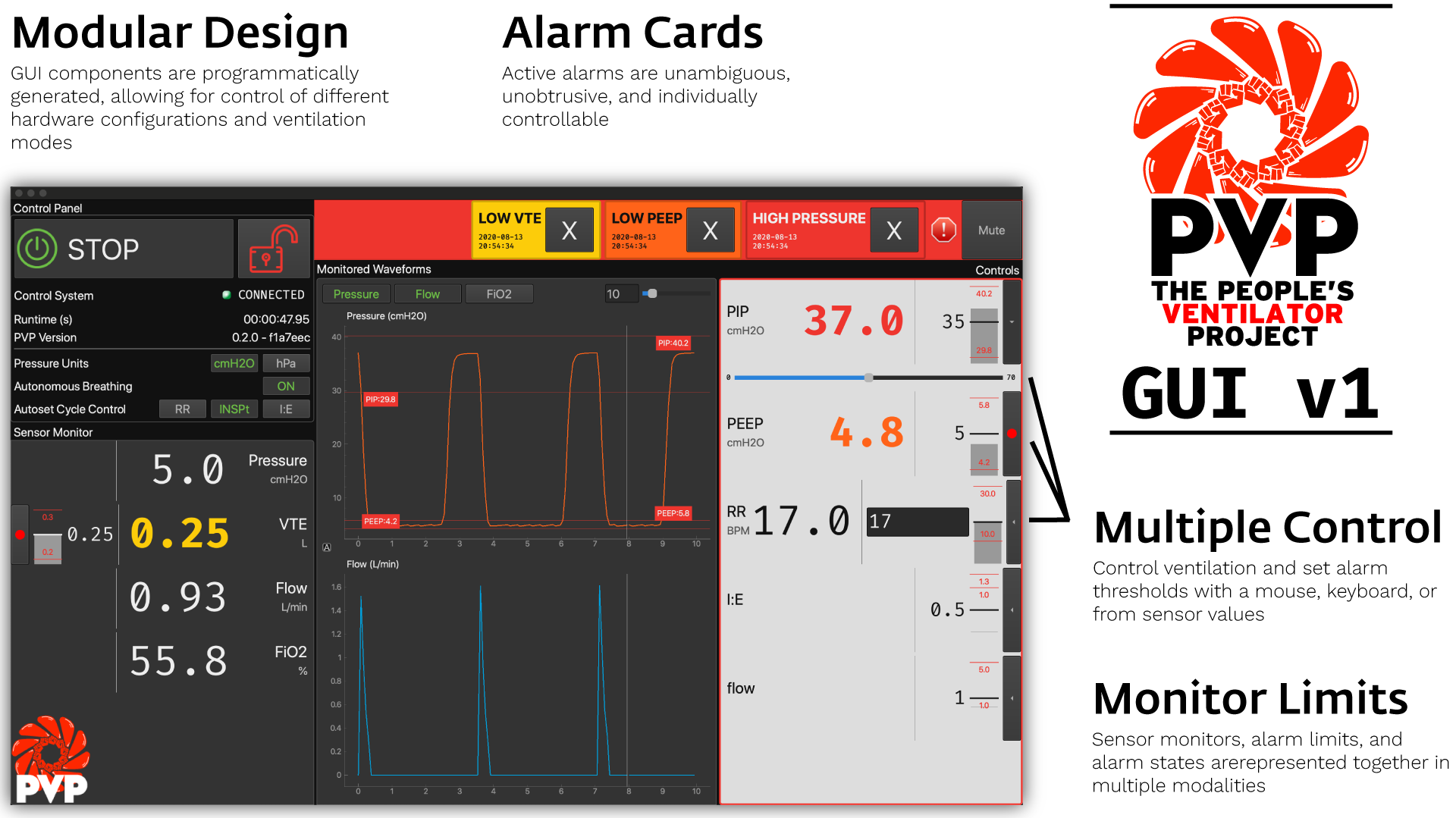
A fully-open
Supply-chain resilient
pressure-control ventilator
for the people
A project funded and supported by Princeton University
The global COVID-19 pandemic has highlighted the need for a low-cost, rapidly-deployable ventilator, for the current as well as future respiratory virus outbreaks. While safe and robust ventilation technology exists in the commercial sector, the small number of capable suppliers cannot meet the severe demands for ventilators during a pandemic. Moreover, the specialized, proprietary equipment developed by medical device manufacturers is expensive and inaccessible in low-resource areas.
The People’s Ventilator Project (PVP) is an open-source, low-cost pressure-control ventilator designed for minimal reliance on specialized medical parts to better adapt to supply chain shortages. The PVP largely follows established design conventions, most importantly active and computer-controlled inhalation, together with passive exhalation. It supports pressure-controlled ventilation, combined with standard-features like autonomous breath detection, and the suite of FDA required alarms.
See our medRxiv preprint here!
Hardware¶
PVP is a pressure-controlled ventilator that uses a minimal set of inexpensive, off-the-self hardware components. An inexpensive proportional valve controls inspiratory flow, and a relay valve controls expiratory flow. A gauge pressure sensor monitors airway pressure, and an inexpensive D-lite spirometer used in conjunction with a differential pressure sensor monitors expiratory flow.
PVP’s components are coordinated by a Raspberry Pi 4 board, which runs the graphical user interface, administers the alarm system, monitors sensor values, and sends actuation commands to the valves. The core electrical system consists of two modular board ‘hats’, a sensor board and an actuator board, that stack onto the Raspberry Pi via 40-pin stackable headers. The modularity of this system enables individual boards to be revised or modified to substitute components in the case of part scarcity.
Software¶

PVP’s software was developed to bring the philosophy of free and open-source software to medical devices. PVP is not only open from top to bottom, but we have developed it as a framework for an adaptable, general-purpose, communally-developed ventilator.
PVP’s ventilation control system is fast, robust, and written entirely in high-level Python (3.7) – without the development and inspection bottlenecks of split computer/microprocessor systems that require users to read and write low-level hardware firmware.
All of PVP’s components are modularly designed, allowing them to be reconfigured and expanded for new ventilation modes and hardware configurations.
We provide complete API-level documentation and an automated testing suite to give everyone the freedom to inspect, understand, and expand PVP’s software framework.
PVP Modules¶
GUI
A modular GUI with intuitive controls and a clear alarm system that can be configured to control any parameter or display values from any sensor.
Controller
A PID Controller to produce a pressure-controlled waveform, while monitoring for possible alarm states.
IO
A hardware abstraction layer powered by pigpio with socket pipeline latency of 0.9 ms.
Alarm
Define complex and responsive alarm triggering criteria with human-readable Alarm Rules
Common
Modules that provide the API between the GUI and controller, user preferences, and other utilities
Medical Disclaimer¶
PVP1 is not a regulated or clinically validated medical device. We have not yet performed testing for safety or efficacy on living organisms. All material described herein should be used at your own risk and do not represent a medical recommendation. PVP1 is currently recommended only for research purposes.
This website is not connected to, endorsed by, or representative of the view of Princeton University. Neither the authors nor Princeton University assume any liability or responsibility for any consequences, damages, or loss caused or alleged to be caused directly or indirectly for any action or inaction taken based on or made in reliance on the information or material discussed herein or linked to from this website.
PVP1 is under continuous development and the information here may not be up to date, nor is any guarantee made as such. Neither the authors nor Princeton University are liable for any damage or loss related to the accuracy, completeness or timeliness of any information described or linked to from this website.
By continuing to watch or read this, you are acknowledging and accepting this disclaimer.